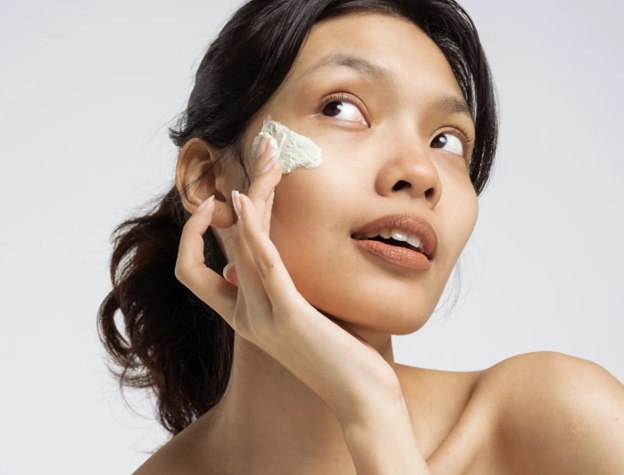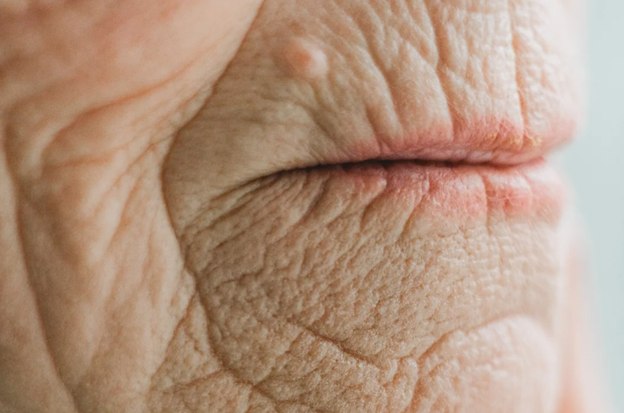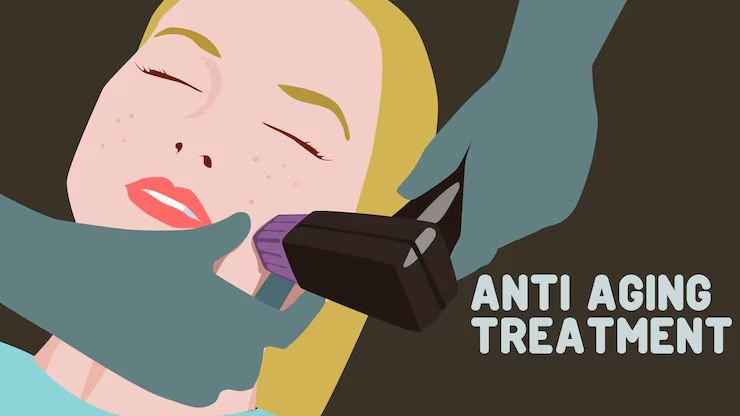You wake up one morning, look in the bathroom mirror, and there it is – a new line that wasn’t there yesterday. Or maybe it was there, but today the light hits it just right and you can’t unsee it. Welcome to the club nobody wants to join: people who suddenly notice their skin is changing.
Here’s the thing about wrinkles – they don’t ask permission before showing up. One day your skin is smooth, the next you’re wondering if that expensive eye cream you bought six months ago was just fancy lotion in a pretty jar.
If you’re reading this, you’ve probably already tried the creams, the serums, maybe even those weird face masks that make you look like a serial killer for 20 minutes. Some might have helped a little, but let’s be honest – you’re still here looking for something that actually works.
That’s where microneedling comes in. No, it’s not as scary as it sounds (I promise we’ll get to that), and yes, it actually works. I’ve been helping people with their skin for over 15 years, and I’ve watched microneedling go from this weird treatment that only celebrities knew about to something regular people do on their lunch breaks.
But here’s what bothers me about most articles on this topic – they either make it sound like torture or like magic. It’s neither. Microneedling is just a smart way to trick your skin into acting younger by using your body’s natural healing process. No weird chemicals, no surgery, no hiding in your house for weeks while you recover.
In this guide, I’m going to tell you exactly how microneedling works, what it feels like (spoiler: not as bad as you think), how much it costs, and most importantly – whether it’s right for you. I’ll also share some stories from real people who’ve tried it, because sometimes you need to hear from someone who’s actually been there.
By the time you finish reading this, you’ll know more about microneedling than most people who’ve already had it done. You’ll know what questions to ask, what to expect, and how to avoid the mistakes that can waste your money and disappoint you.
Ready? Let’s figure out if tiny needles might be the answer to your wrinkle problems.
What Is Microneedling and Why Does Everyone Talk About It?

Microneedling sounds scary, but it’s actually pretty simple. Think of it like this: you know how when you get a small cut, your skin works hard to fix itself? Microneedling does the same thing, but on purpose and in a controlled way.
A trained person uses small, sterilized needles to prick the skin, creating tiny holes that are so small you can barely see them. Your skin thinks it needs to repair itself, so it starts making more collagen and elastin – the stuff that keeps your skin smooth and bouncy.
Why This Works Better Than Expensive Creams
I’ve been working with skin treatments for over 15 years, and I’ve seen people spend hundreds of dollars on creams that barely work. Here’s the truth: most creams can’t get deep enough into your skin to make real changes.
Microneedling is different because:
- It works from the inside out
- It uses your body’s natural healing process
- The results keep getting better for months after treatment
- It doesn’t carry the risk of skin discoloration, unlike some facial rejuvenation procedures that use heat, light or lasers
How Your Skin Ages (The Real Story)
Before we talk about fixing wrinkles, let’s understand why they show up in the first place.
Collagen Problem
When you’re young, your skin makes lots of collagen. Think of collagen like the scaffolding that holds up a building – it keeps everything tight and smooth. But as you get older:
- Your body makes less collagen each year
- The collagen you have starts breaking down
- Your skin gets thinner and less elastic
- Fine lines and wrinkles start showing up
Other Things That Make Wrinkles Worse
| Factor | How It Affects Your Skin |
|---|---|
| Sun exposure | Breaks down collagen faster |
| Stress | Increases inflammation |
| Poor sleep | Reduces skin repair time |
| Dehydration | Makes skin look dull and lined |
| Genetics | Some people age faster than others |
How Microneedling Actually Fights Wrinkles
Here’s where the magic happens. When those tiny needles create micro-injuries in your skin, your body responds like it’s fixing a real wound. But instead of just patching things up, it goes into overdrive:
What the Research Shows
A study of 32 people with an average age of 56 showed significant improvement in facial wrinkles after microneedling treatments. Even better, 93.8% of people saw improvement in how their wrinkles looked, and 87.5% were satisfied with the treatment.
Where You Can Use Microneedling for Wrinkles
The great thing about microneedling is that it works almost anywhere you have wrinkles:
Face Areas
- Forehead lines – Those horizontal lines across your forehead
- Crow’s feet – Lines around your eyes
- Smile lines – From your nose to the corners of your mouth
- Upper lip lines – Those vertical lines above your lip
- Frown lines – Between your eyebrows
Body Areas
- Neck – Studies show significant improvements as early as 30 days following 4 monthly treatments on neck wrinkles
- Chest – For that crinkly décolletage area
- Hands – Back of hands where age spots and wrinkles show up
- Arms – Upper arms where skin gets loose and lined
What Does Microneedling Actually Feel Like?

Let me be honest with you – nobody wants to sign up for torture. The good news is that microneedling isn’t nearly as bad as it sounds.
Before Treatment
- They put numbing cream on your skin and let it sit for about 20-30 minutes
- Your skin should feel completely numb before they start
- Some people say they don’t feel anything at all
During Treatment
- Most people describe it as “tingly” or “like light sandpaper”
- The sensation changes depending on the area (around eyes is more sensitive)
- The whole thing usually takes 30-60 minutes
After Treatment
- Your skin looks pink, like you spent too much time in the sun
- It might feel tight or slightly warm
- This usually goes away within 24-48 hours
- Most people go back to work the next day
Personal Experience Note
I remember my first microneedling client was terrified. She had tried everything for her deep forehead lines and was convinced this would be torture. After the numbing cream, she said it felt like “tiny raindrops.” She fell asleep during the treatment!
How Many Sessions Do You Actually Need?
This is the question everyone asks, and the answer is: it depends on what you’re dealing with.
For Fine Lines and Early Wrinkles
- 3-4 sessions spaced 4-6 weeks apart
- You’ll start seeing changes after the second session
- Results keep improving for 3-6 months after your last treatment
For Deeper Wrinkles
- 4-6 sessions spaced 4-6 weeks apart
- Might need maintenance treatments every 6-12 months
- Be patient – deeper wrinkles take more time to improve
Realistic Timeline
| Time After Treatment | What to Expect |
|---|---|
| 1 week | Skin looks brighter, feels smoother |
| 1 month | Fine lines start softening |
| 3 months | Noticeable improvement in skin texture |
| 6 months | Maximum results visible |
Advanced Microneedling Options That Work Even Better
Once you understand basic microneedling, there are some add-ons that can make your results even better:
PRP (Platelet-Rich Plasma)
- They take your own blood and separate out the healing parts
- This gets applied to your skin during or after microneedling
- It’s like giving your skin extra healing power
- Results tend to be more dramatic and last longer
Radiofrequency Microneedling
- Combines microneedling with heat energy
- The heat helps tighten skin even more
- Great for people with loose skin along with wrinkles
- More expensive but often worth it for significant aging
Exosome Therapy
- Uses tiny messengers that tell your cells to repair faster
- Still pretty new but showing promising results
- More expensive than basic microneedling
Who Should and Shouldn’t Try Microneedling
You’re Probably a Good Candidate If:
- You have fine lines or wrinkles that bother you
- You want natural-looking results
- You don’t want surgery or injections
- You have realistic expectations
- Your skin is generally healthy
Skip Microneedling If:
- You have active acne breakouts
- You’re taking blood thinners
- You have keloid scarring tendencies
- You’re pregnant or nursing
- You have active skin infections or rashes
Age Considerations
- 20s-30s: Great for prevention and maintaining skin quality
- 40s-50s: Perfect time to address early to moderate aging
- 60s+: Can still help, but might need to combine with other treatments
Everything You Need to Know About Microneedling Success

Getting the best results from microneedling isn’t just about showing up for your appointments. There are specific things you need to know and do to make sure your treatment works as well as possible.
Choosing the Right Provider Makes All the Difference
- Not all microneedling is created equal. I’ve seen people waste money and time because they went to someone who didn’t know what they were doing. Here’s what to look for when choosing where to get your treatment:
- First, make sure your provider is actually trained in microneedling. This might sound obvious, but you’d be surprised how many places offer it after just a weekend course. Look for someone who has been doing it for at least a year and can show you before and after photos of their actual patients.
- The equipment matters too. Professional microneedling devices are different from those cheap rollers you can buy online. Medical-grade devices have needles that stay sharp, penetrate evenly, and are properly sterilized. If your provider is using something that looks like it came from Amazon, find someone else.
- Ask about needle depth. Different areas of your face need different needle depths. Around your eyes, they might use 0.5mm needles, but on your cheeks or forehead, they might go up to 1.5mm or 2mm. A good provider will adjust based on your skin thickness and what you’re trying to treat.
Preparing Your Skin for the Best Results
- What you do before your treatment can make a big difference in how well it works. Two weeks before your first session, start using a good vitamin C serum in the morning and a retinol product at night (but stop the retinol 3-5 days before your appointment).
- Make sure your skin is healthy before you start. If you have any active breakouts, wait until they clear up. Microneedling over active acne can spread bacteria and make things worse. Also, avoid waxing, hair removal, or harsh scrubs for at least a week before treatment.
- Don’t get any other facial treatments for two weeks before microneedling. This includes chemical peels, laser treatments, or even professional facials. Your skin needs to be in its normal state, not irritated or sensitized from other procedures.
- If you take any medications, especially blood thinners, tell your provider. Some medications can increase bleeding or slow healing. They might ask you to stop certain supplements like fish oil or vitamin E a few days before treatment.
The Day of Treatment: What Really Happens
- When you arrive for your appointment, your provider should examine your skin and discuss what you want to achieve. They should also take before photos so you can track your progress over time.
- The numbing cream application is crucial. They should apply a thick layer and leave it on for at least 20-30 minutes. Don’t let anyone rush this step. If your skin isn’t properly numb, the treatment will be uncomfortable and you might tense up, which can affect the results.
- During the actual treatment, pay attention to how your provider works. They should be systematic, covering every area evenly. The device should make contact with your skin at a 90-degree angle, and they should apply consistent pressure. If they’re being rough or rushed, speak up.
- Good providers will adjust their technique based on how your skin responds. Some people’s skin gets red quickly, others barely react. An experienced person will notice this and modify their approach accordingly.
Immediately After Treatment: The Critical First 24 Hours
- The first day after microneedling is when your skin is most vulnerable and when you can either help or hurt your results. Your provider should give you specific aftercare instructions, but here’s what really matters:
- Don’t touch your face unless you absolutely have to, and if you do, make sure your hands are completely clean. Your skin has thousands of tiny openings right now, and bacteria can get in easily.
- Use only the products your provider recommends for the first 24-48 hours. This is not the time to try new skincare products or use anything with active ingredients. Stick to gentle, healing products like hyaluronic acid serum and a bland moisturizer.
- Avoid water on your face for at least 6-8 hours after treatment. When you do wash your face, use lukewarm water and pat dry very gently. Don’t rub or scrub.
- Sleep with your head elevated the first night. This helps reduce swelling and keeps you from accidentally rubbing your face on your pillow.
First Week: Managing Expectations and Side Effects
- Your skin will go through several phases in the first week. Days 1-2, you’ll be pink and possibly swollen. This is normal. Days 3-4, you might start peeling or flaking. Don’t pick at it. Days 5-7, the redness should fade and your skin should start looking better than before treatment.
- Some people get tiny bumps or feel like their skin is rough during the healing process. This usually means the treatment is working and new skin is forming underneath. Resist the urge to scrub or use harsh products to “fix” this.
- If you develop any signs of infection (increasing redness, pus, red streaks, fever), contact your provider immediately. While rare, infections can happen if aftercare instructions aren’t followed properly.
Building Your Results Over Multiple Sessions
- Each microneedling session builds on the previous one. After your first treatment, you’ll probably see some improvement in skin texture and brightness, but the real wrinkle reduction comes after several sessions.
- Keep track of your progress with photos taken in the same lighting at the same angle. It’s easy to forget how your skin looked before when you see it every day in the mirror.
- Between sessions, maintain your results with good skincare. Use sunscreen every day (this is non-negotiable), keep your skin moisturized, and consider adding proven anti-aging ingredients like retinol and vitamin C once your skin has completely healed from each treatment.
Long-term Maintenance and Realistic Expectations
- Microneedling isn’t a one-and-done treatment. Most people need maintenance sessions every 6-12 months to keep their results. Think of it like getting your hair cut – regular upkeep keeps you looking your best.
- Be realistic about what microneedling can and can’t do. It’s excellent for fine lines, mild to moderate wrinkles, and overall skin quality. It’s not going to give you the same results as a facelift for severe sagging or very deep wrinkles.
- The best candidates for microneedling are people who want gradual, natural-looking improvement. If you’re looking for dramatic overnight changes, this isn’t the right treatment for you.
- Remember that your lifestyle affects your results. If you don’t wear sunscreen, smoke, or don’t take care of your skin between treatments, your results won’t last as long or look as good.
- Finally, be patient with the process. Skin remodeling takes time, and the best results from microneedling often aren’t visible until 3-6 months after your last treatment. Trust the process and follow your provider’s recommendations, and you’ll likely be very happy with your results.
Cost and Value: Is Microneedling Worth It?
Let’s talk money because everyone wants to know what this actually costs and whether it’s worth it.
Typical Pricing
- Single session: $200-$700 depending on your location
- Package deals: Often 10-20% cheaper when you buy multiple sessions
- Add-ons like PRP: Usually add $100-$300 per session
Comparing Costs
- Botox: $300-$500 every 3-4 months = $1,200-$2,000 per year
- Professional facials: $100-$200 monthly = $1,200-$2,400 per year
- Microneedling: $600-$2,000 for initial series, then maintenance
Value Considerations
The value isn’t just about money – it’s about results that last and keep getting better over time. Unlike Botox that needs constant touch-ups, microneedling results can last 1-2 years with proper maintenance.
Common Mistakes People Make
Before Treatment
- Not researching their provider thoroughly
- Expecting immediate results
- Not following pre-treatment instructions
- Choosing the cheapest option without considering quality
After Treatment
- Using harsh products too soon
- Not wearing sunscreen consistently
- Picking at peeling skin
- Expecting miracles after one session
Long-term
- Skipping maintenance treatments
- Not maintaining good skincare habits
- Getting impatient with the gradual results
Final Lines
Microneedling works. The research backs it up, and I’ve seen thousands of people get real results. But it’s not magic, and it’s not right for everyone.
You should consider microneedling if:
- You want natural-looking improvement in your wrinkles
- You’re willing to be patient with gradual results
- You don’t want surgery or regular injections
- You’re committed to proper aftercare and maintenance
Look for other options if:
- You want dramatic, immediate changes
- You have very deep wrinkles or significant sagging
- You’re not willing to invest in a series of treatments
- You have skin conditions that make you a poor candidate
The truth is, aging is normal and natural. But if wrinkles bother you and you want to do something about them, microneedling is one of the most effective, safest ways to turn back the clock without going under the knife.
Just remember: choose your provider carefully, follow instructions exactly, and be patient with the process. Your skin will thank you for it.

